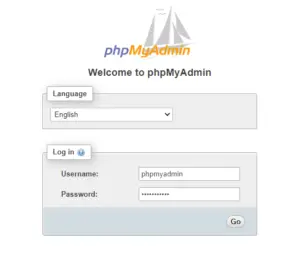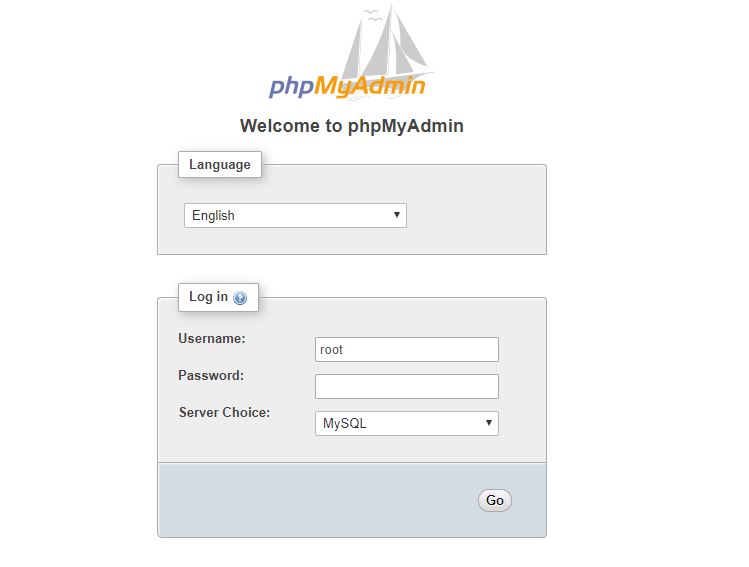

- #Phpmyadmin no privileges how to#
- #Phpmyadmin no privileges update#
- #Phpmyadmin no privileges full#
Any privileges defined by a plugin or component are registered in this table.
global_grants: The global_grants table defines each user's dynamic global privileges. These privileges apply to the whole MySQL server and are not affected by the availability of any plugins or components.  user: The user table defines each user's static global privileges. Here is a review the where MySQL keeps different types of privilege information as was covered in the introduction to MySQL authentication and authorization article: MySQL stores the information about which users have what privileges in a number of different tables in the mysql system database. If the user is missing any of the required privileges, an error will occur. If the user has been granted all of the privileges required to perform the action, MySQL executes the statements. In MySQL, the privilege system determines whether a user can execute a given command or not.Įach time a client attempts to perform an action, MySQL consults its information on the user's privileges to determine whether it should be allowed or not.
user: The user table defines each user's static global privileges. Here is a review the where MySQL keeps different types of privilege information as was covered in the introduction to MySQL authentication and authorization article: MySQL stores the information about which users have what privileges in a number of different tables in the mysql system database. If the user is missing any of the required privileges, an error will occur. If the user has been granted all of the privileges required to perform the action, MySQL executes the statements. In MySQL, the privilege system determines whether a user can execute a given command or not.Įach time a client attempts to perform an action, MySQL consults its information on the user's privileges to determine whether it should be allowed or not. #Phpmyadmin no privileges full#
This could be the common user that is configured during installation, or any other user with full privileges. To follow along with this guide, we will assume that you are using an account with full administrative privileges (including the GRANT OPTION privilege).
SELECT on mysql.*: used to execute SHOW GRANTS for other accounts. whatever privileges you wish to assign to other users. GRANT OPTION: the GRANT OPTION privilege allows you to grant or revoke any privilege that you have been granted. 
To manage privileges for MySQL users, you need to have the following privileges: REVOKE: use to remove existing privileges from a user account.GRANT: use to assign new privileges to a user account.The most important commands we'll be using in this guide are the GRANT and REVOKE commands: To follow along with this guide, you'll need an account on a MySQL server with the appropriate privileges.
#Phpmyadmin no privileges how to#
In this guide, we will talk about how to use the GRANT and REVOKE commands to add and remove privileges from MySQL user accounts and implement access policies that match your requirements. MySQL has a robust privilege assignment system that allows you to implement access policies throughout your database system. Deciding who should have what access to which components and powers and then designing an implementation that enables those policies requires a good deal of thought and care. Privilege management is an important part of system and database administration.
The United States' Most Popular Databases by state going into 2022. Traditional databases vs serverless databases. Introduction to common serverless challenges. Top 13 serverless computing and database providers. Serverless architecture | Prisma's Data Guide. Syncing Development Databases Between Team Members. Troubleshooting Database Outages and Connection Issues. Managing databases | Prisma's Data Guide. Top 8 TypeScript ORMs, Query Builders, & Database Libraries: Evaluating Type Safety. Top 11 Node.js ORMs, Query Builders & Database Libraries in 2022. Database tools | SQL, MySQL, Postgres | Prisma's Data Guide. How to query and filter documents in MongoDB. How to manage databases and collections in MongoDB. How to manage authorization and privileges in MongoDB. How to manage users and authentication in MongoDB. Introduction to provisioning MongoDB Atlas. #Phpmyadmin no privileges update#
How to update existing data with SQLite. How to perform basic queries with `SELECT` with SQLite. Inserting and deleting data with SQLite. Creating and deleting databases and tables with SQLite. An introduction to MySQL column and table constraints. How to create and delete databases and tables in MySQL. How to manage privileges with roles in MySQL. How to use `GRANT` and `REVOKE` to manage privileges in MySQL. How to manage users and authentication in MySQL. An introduction to authorization and authentication in MySQL. An introduction to PostgreSQL column and table constraints. An introduction to PostgreSQL data types. How to create and delete databases and tables in PostgreSQL. Managing privileges in PostgreSQL with grant and revoke. Configuring PostgreSQL user authentication. Managing roles and role attributes in PostgreSQL. An introduction to authorization and authentication in PostgreSQL. How to configure a PostgreSQL database on RDS. Glossary of common database terminology. 
Comparing database types: how database types evolved to meet different needs.








 0 kommentar(er)
0 kommentar(er)
